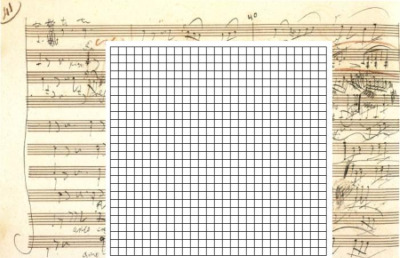By the later 20th Century, the performance of classical music — for orchestra, also chamber music, and solos — was dominated by pervasive strong regular beat. Emphasis on beat-regularity is the outcome or reflection of several musical and societal changes, among these mass production, the standardization of time keeping (time zones), the metronome, sound recording, the ascent of conducting, more emphasis on “full” scores, the practice of rhythmic “subdividing” by performers, and even notions of egalitarian society.
The accommodation of old music to a modern sense of beat propriety is pervasive. But, the communicative power of earlier music is damaged by extremely regular beating.
In the mid-20th Century, the residual power (or the memory of the power) of specific music might still have been sufficient to allow strong expression and compel attention from listeners, even with performances having increased beat regularity.
Schoenberg’s 1948 article describes the great change that was occurring. He writes: “Almost everywhere in Europe music is played in a stiff, inflexible metre — not in a tempo, i.e. according to a yardstick of freely measured quantities… A change of character, a strong contrast, will often require a modification of tempo. But the most important changes are necessary for the distribution of the phrases of which a segment is composed.” Discussing a piece he aspired to conduct, Schoenberg writes, “It seemed to me as if the conductor has taken a wet sponge, erasing all traces of problems by playing whole movements in one stiff, inflexible tempo.”
Today, can it be that one of the reasons classical music offers little to most listeners in the world is that, in performance, it has been modified to conform to notions of time that, while possibly congruent with recent music, are fundamentally at odds with expression in music by Mozart, Beethoven, or Schoenberg?
Can it be that if financially troubled orchestras would only manifest greater rhythmic flexibility there would be stronger community interest and support?
Has classical music been modernized or remodeled in a way that makes it less compelling — and less useful?
Over a period of 150 years, modern orchestra players learned to stay together with greater ease. Partly in response to changes in musical needs, conductors were increasingly adroit in keeping time. The rise of the symphony orchestra is part of this change. Orchestral players of the 18th and early 19th Centuries were rooted in the opera house. The playing of symphonies was rare. The basic experience of those players (and conductors) was accommodating the voice — accompanying. In later manifestations, conductors became leaders, or directors.
Dare I mention Mr. Slatkin at the Met? I feel confident that Mr. Slatkin would have given a coherent performance of La Traviata — if only every player and singer had followed him and his beat.
Am I advocating a return to the ensemble practice and protocols of the pre-symphony period? Not necessarily. Am I suggesting that playing with rhythmic “messiness” (non-simultaneity) and diversity of rhythmic practice in earlier music offers the best way to hear that music now, given the ears of the contemporary audience? Not entirely. I am suggesting that if we can open our imagination to the range of rhythmic, ensemble, inflective, and expressive possibilities that are represented and encoded in the texts that we do have from the past, we may rediscover some of the communicative power that these scripts may encode.

That inflexible and metronomic performances are an invention of the 20th century is corroborated by the composers’ own comments on the subject:
“100 according to Maelzel, but this applies only to the first measures, as feeling has its own tempo” (Beethoven)
“It is impossible to notate the exact value of a rhythm” (Debussy)
“You want my opinion about the metronomic indications? They are true for just one measure.” (Debussy)
“A metronomical performance is certainly tiresome and nonsensical. Time and rhythms must be adapted to and identified with the melody, the harmony, the accent, and the poetry… But how to indicate all this? I shudder at the thought of it.” (Liszt)
While these might just be quotes, they point out one fundamental flaw in the way we read music: that a composer’s aesthetic is only revealed by an objective approach to the musical text. If a performer decides to adhere to agogic inflexibility throughout a whole composition because agogic freedom is not indicated in the music, it is obviously his prerogative. What is unacceptable is the claim of “authenticity” that is attached to this interpretive vision. Such dogmatic approach is professed by “authorities” in their recordings, live performances, and in their deliberations about music. It tends to be instilled in our teaching as well, as a system of “moral” oughts that indelibly affect the musical language of young musicians. If composers themselves fought against that very rigidity, it seems only reasonable to believe that imposing such ideas with the authoritative claim that they are “authentic” is completely absurd.
Returning to the freedom of 18th- and 19th-century music making may not necessarily be the goal. But ignoring certain practices that are well documented and adhering to preconceived notions of appropriateness of style and sound production that have been created in the 20th century may hinder our ability to discover our own voice, preventing us from setting ourselves apart as interpreters.